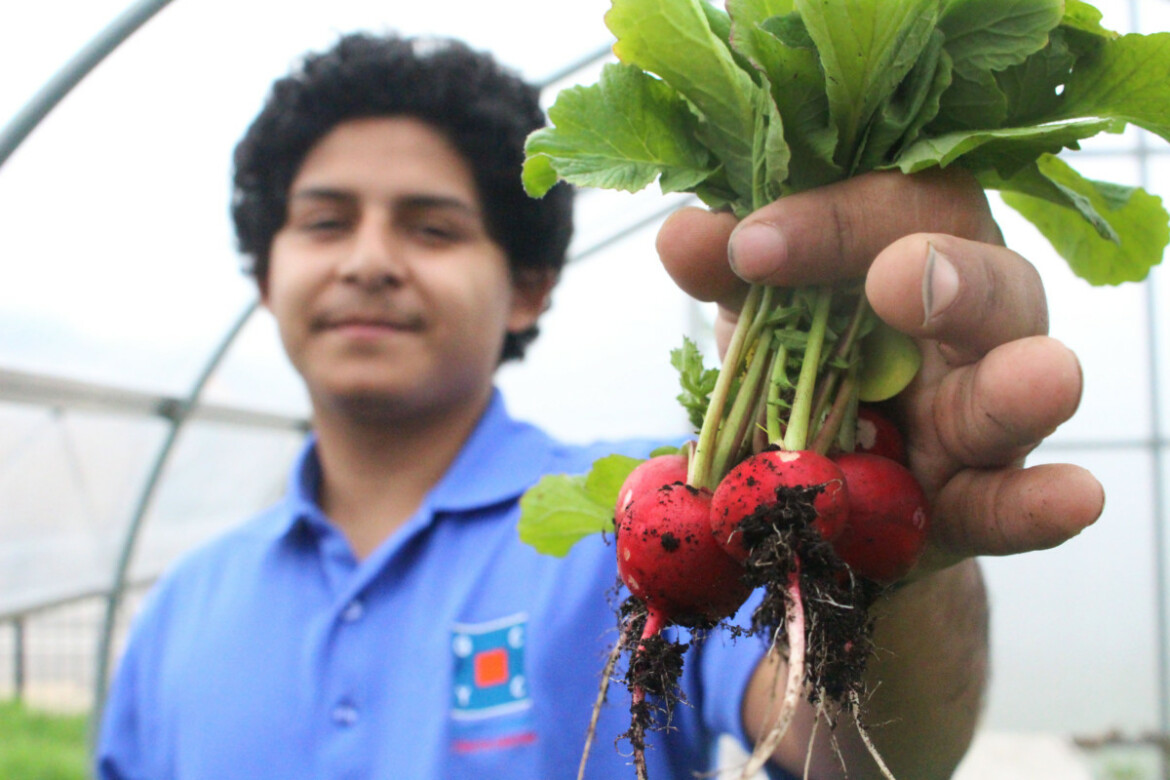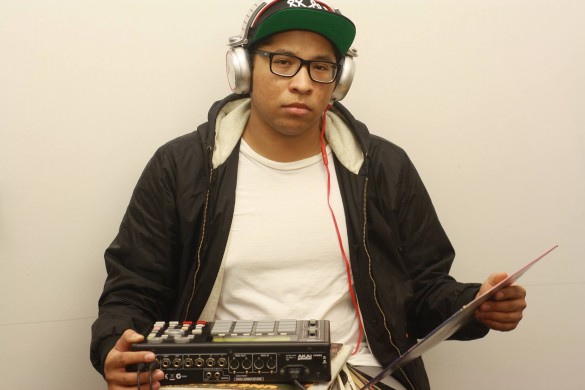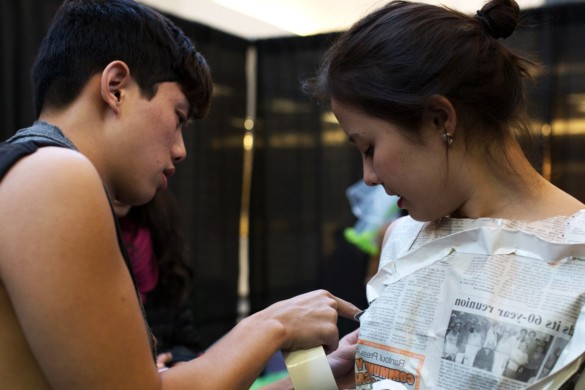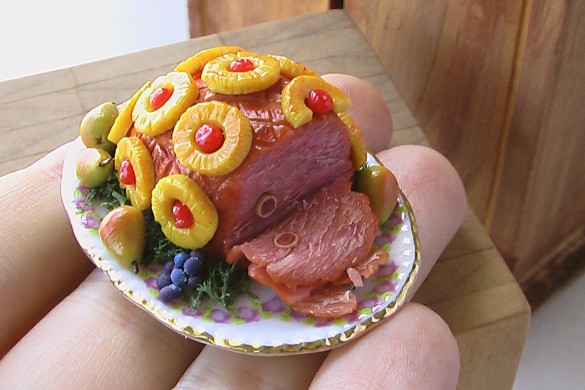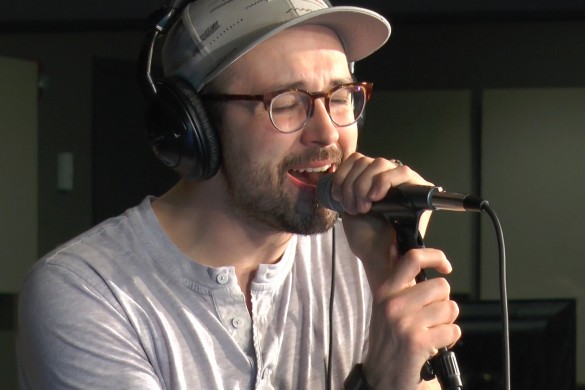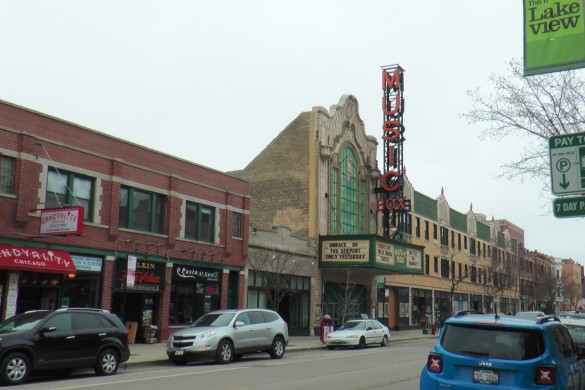The Gary Comer Youth Center in Chicago is tackling food insecurity one vegetable at a time
Words by Sarah LeBlanc
Video and Photos by Lauren Baker
In a Subway shop, a woman stands behind bulletproof glass. She lifts up a partition and takes a card, sliding it back under after the purchase is made. It’s an unfamiliar picture for those from small Midwestern towns, but it represents what youth on the South Side of Chicago confront every day.
Five minutes away on Ingleside Avenue, a building patterned with bright red and blue rectangles stands out amid the tightly-packed Greater Grand Crossing neighborhood. Its doors opened 11 years ago — funded by a man who went to grammar school just a few blocks down at Paul Revere Elementary and who later gained a reputation as a philanthropist and founder of Lands’ End. The Gary C. Comer Youth Center is a haven for young people in Chicago. Comer’s mission to reinvigorate the area resulted in new homes, better technology in schools and safe facilities for youth to explore their passions.
Several of these facilities are focused on providing fresh fruits and vegetables to areas of Chicago struggling with food insecurity. Especially on the South Side, it can be difficult to find fresh meal options without a nearby farm or grocery store. But across the street from the youth center, a small urban farm sits with rows of vegetables waiting to be harvested.
Andy Rozendaal, the farm manager at the youth center, has worked with students for five years to teach them the hard work required to grow fresh produce. Originally from Monroe, Iowa, Rozendaal grew up on a farm and understands the importance of knowing where food comes from. But urban farming is different from farming in rural Iowa.
“I think to have food in the middle of urban places, it connects people to where the food does come from,” Rozendaal said. “Especially for this community, I think it makes a difference. This is an area where there’s a lot of food insecurity.”
To combat this insecurity, Rozendaal and his workers produce thousands of pounds of produce each year and donate about 50 percent to food pantries in the area. More food is distributed to the culinary department to be made into lunches for students at the youth center and Chicago public schools, and the rest is either sold to local restaurants or residents or taken home by youth.
“When you grow something, you have more interest in actually eating it,” Rozendaal said. “We’ve found that young people will take home the food that we grow and they wouldn’t have bought it at the grocery store otherwise.”
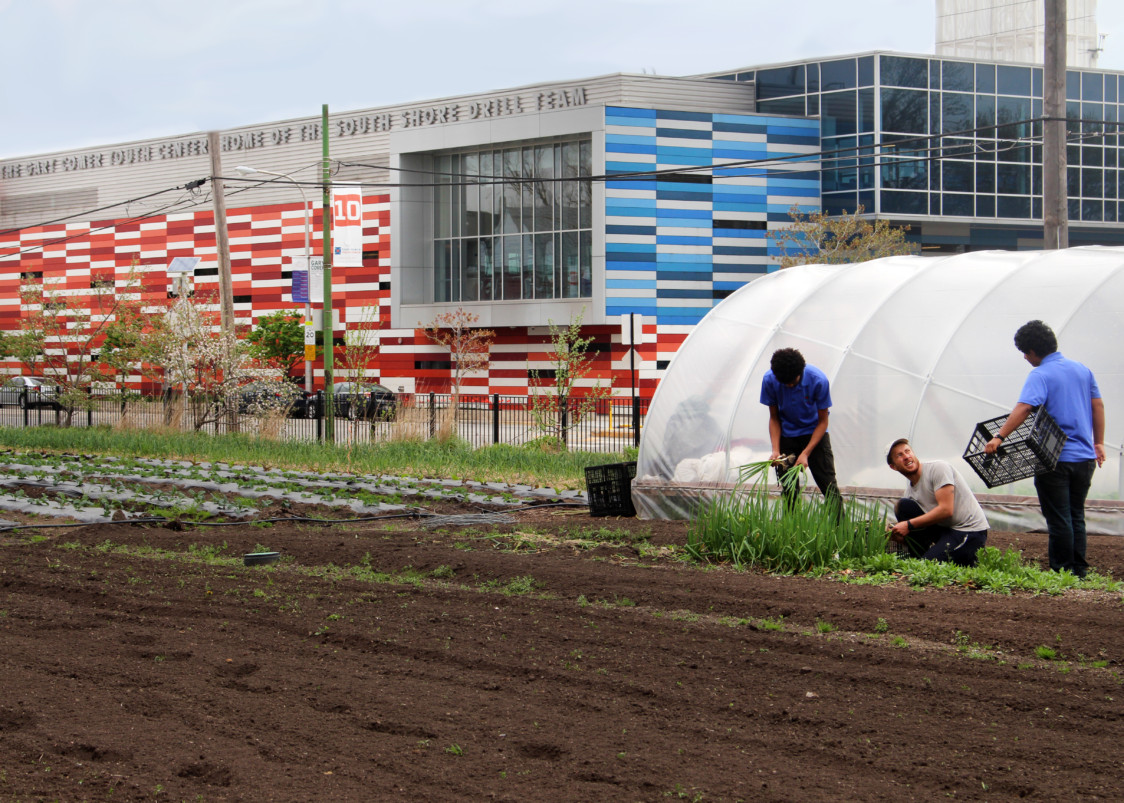
Workers pick vegetables between bouts of rain outside the youth center. Most of the vegetables go to the culinary department to be used in meals for students.
The farm also grows connections between students and potential careers. The Green Teens program is an opportunity for youth 14 to 18 years old to earn a stipend while expanding their skills in different areas. The students are required to fill out an application, submit recommendations and interview for the program. In the summer, Green Teens host the weekly Harvest Table, which sells the produce from the youth center’s garden.
“They learn a few jobs skills, they learn a few things about gardening and about being part of a community, and they earn a stipend, and then they get to pass our program,” said Aaron Levine.
Levine is transplanting peppers. He’s the urban agriculture coordinator at the youth center and he instructs the Green Teens program, leading them on field trips and college visits while teaching them about horticulture, green careers and current environmental events. As he talks, he fills small plastic pots with soil and pats it down around an emerging sprout. His hands are stained with dirt.
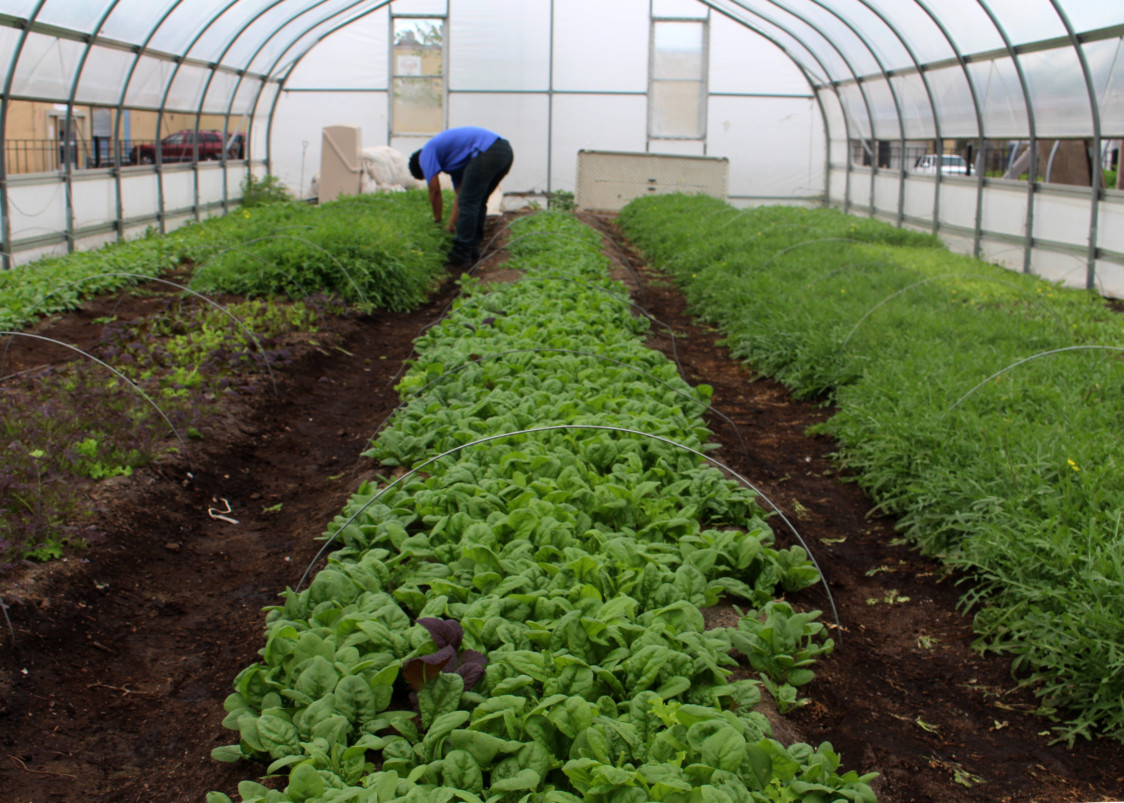
Fresh fruits and vegetables from the farm go to the youth center and restaurants around Chicago. Workers spend several hours each day picking the produce.
“They’re taking all the basic things that we do, like planting peppers, and bringing it to the next level,” Levine said. “They’ll be taking all the produce from these very peppers and making them available to our community members on Friday afternoons in the summertime.”
Green Teens isn’t the only career-focused program hosted at the center. Shacana Watkins runs the career pathways program in the culinary department, which teaches students the tools of the culinary trade. She works with eight youth in the career pathways program and 25 culinary students, and continues to enjoy expanding her own horizons.
“I love people. I love teaching them a different way of life,” Watkins said. “Being around a bunch of youth, you learn every single day.”
Watkins has plenty to teach, too. Her focus is on the presentation of a meal and impressing the importance of nutrition and local food on her students.
“Working in a poverty ridden area and then being able to show the students that eating habits can be a little different and focus more around nutrition, I think it’s really important,” Watkins said. “The generation or the world that we live in now, people eat with their eyes, so it’s kind of trying to promote it so what they see they might kind of migrate to.”
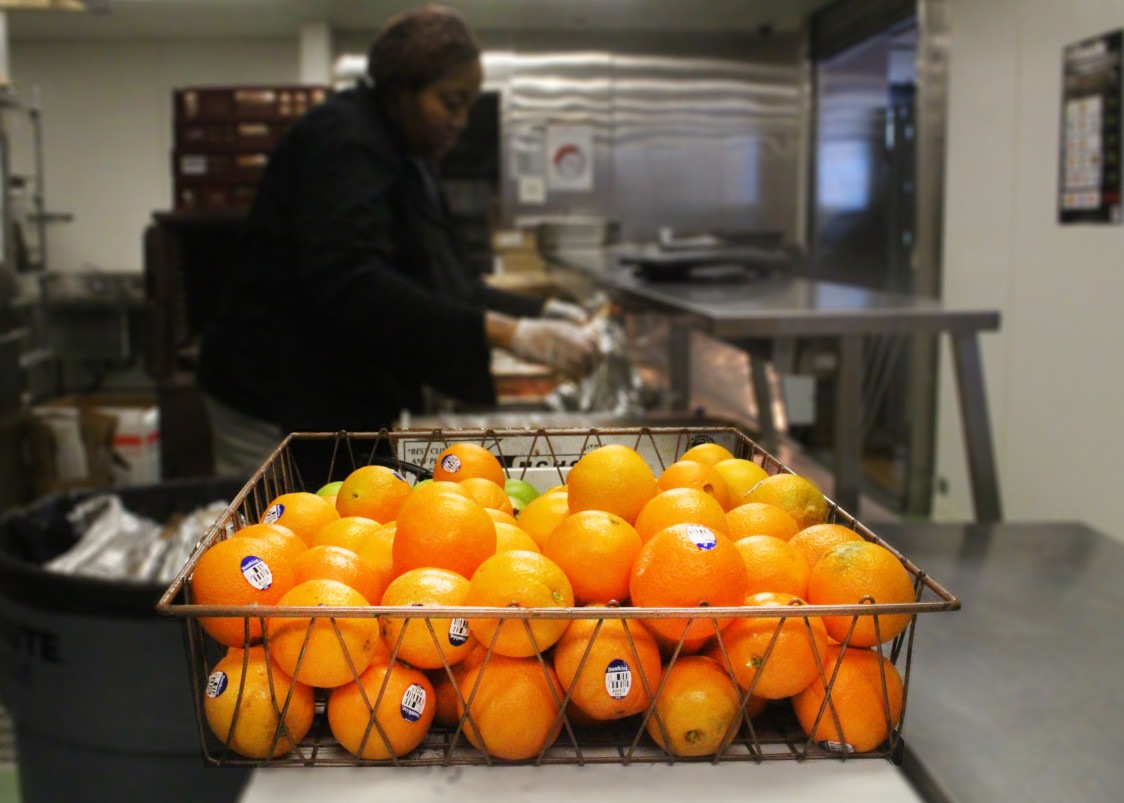
The culinary department serves food for hundreds of Chicago public school students. Shachna Watkins puts an emphasis on presentation and nutrition when serving meals.
This year, Rozendaal says the garden has committed to providing the culinary department with the majority of its produce so that it can be enjoyed in catering events and the summer salad bar. Because the culinary department serves breakfast, lunch, dinner and two snacks to students that attend the youth center, and partners with more than 50 Chicago public schools, a healthy menu is essential.
In the culinary pathways program, Watkins treats every member equally, regardless of their interest in further pursuing a career in the food industry. Raesan Parson is the lead culinary worker and a May 2016 graduate of Alabama A&M University. He’s been working with the center since he was a sophomore in high school, starting with the Green Teens program and transitioning to the kitchen.
“With the Green Teens program, we were just in the garden picking the fruits and the vegetables and harvesting and planting and it was a little bit more dirty,” Parson said. “In the kitchen, you had a little bit more creativity you could show and just a little more you could do. Being a part of the programs at the center shaped me to become more independent and helped me with job readiness.”
For the students at the Gary Comer Youth Center, the activities after school provide relief from gang violence that has caused the South Side to carry a dangerous reputation. Programs give youth outlets for creativity while employing them with meaningful work and preparing them for future careers. And while parts of the city are still suffering in a food desert, those at the youth center are dedicated to giving back — vegetable by vegetable.

